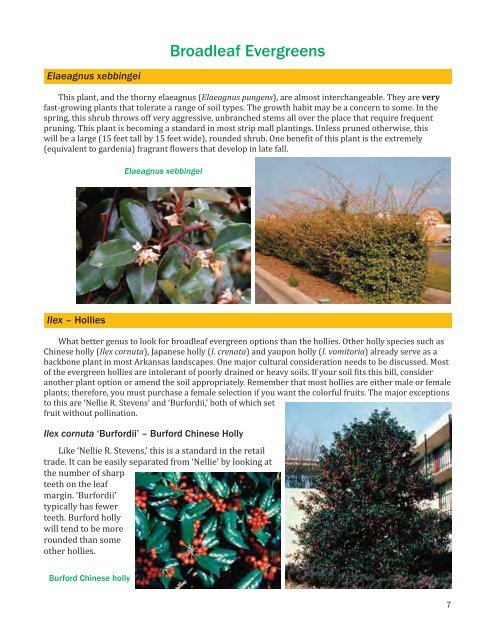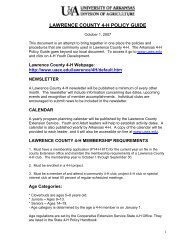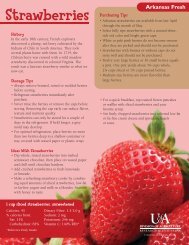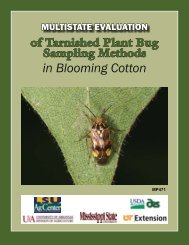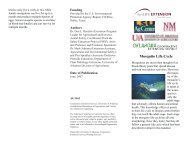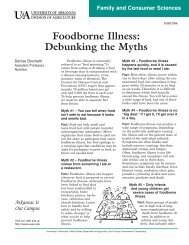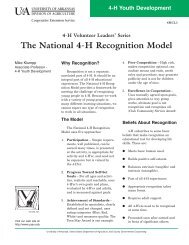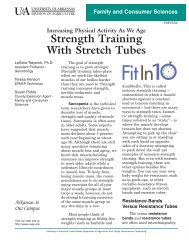Evergreen Hedge Or Screen Plants - University of Arkansas ...
Evergreen Hedge Or Screen Plants - University of Arkansas ...
Evergreen Hedge Or Screen Plants - University of Arkansas ...
Create successful ePaper yourself
Turn your PDF publications into a flip-book with our unique Google optimized e-Paper software.
Broadleaf <strong>Evergreen</strong>s<br />
Elaeagnus xebbingei<br />
This plant, and the thorny elaeagnus (Elaeagnus pungens), are almost interchangeable. They are very<br />
fast‐growing plants that tolerate a range <strong>of</strong> soil types. The growth habit may be a concern to some. In the<br />
spring, this shrub throws <strong>of</strong>f very aggressive, unbranched stems all over the place that require frequent<br />
pruning. This plant is becoming a standard in most strip mall plantings. Unless pruned otherwise, this<br />
will be a large (15 feet tall by 15 feet wide), rounded shrub. One benefit <strong>of</strong> this plant is the extremely<br />
(equivalent to gardenia) fragrant flowers that develop in late fall.<br />
Elaeagnus xebbingei<br />
Ilex – Hollies<br />
What better genus to look for broadleaf evergreen options than the hollies. Other holly species such as<br />
Chinese holly (Ilex cornuta), Japanese holly (I. crenata) and yaupon holly (I. vomitoria) already serve as a<br />
backbone plant in most <strong>Arkansas</strong> landscapes. One major cultural consideration needs to be discussed. Most<br />
<strong>of</strong> the evergreen hollies are intolerant <strong>of</strong> poorly drained or heavy soils. If your soil fits this bill, consider<br />
another plant option or amend the soil appropriately. Remember that most hollies are either male or female<br />
plants; therefore, you must purchase a female selection if you want the colorful fruits. The major exceptions<br />
to this are ‘Nellie R. Stevens’ and ‘Burfordii,’ both <strong>of</strong> which set<br />
fruit without pollination.<br />
Ilex cornuta ‘Burfordii’ – Burford Chinese Holly<br />
Like ‘Nellie R. Stevens,’ this is a standard in the retail<br />
trade. It can be easily separated from ‘Nellie’ by looking at<br />
the number <strong>of</strong> sharp<br />
teeth on the leaf<br />
margin. ‘Burfordii’<br />
typically has fewer<br />
teeth. Burford holly<br />
will tend to be more<br />
rounded than some<br />
other hollies.<br />
Burford Chinese holly<br />
7


